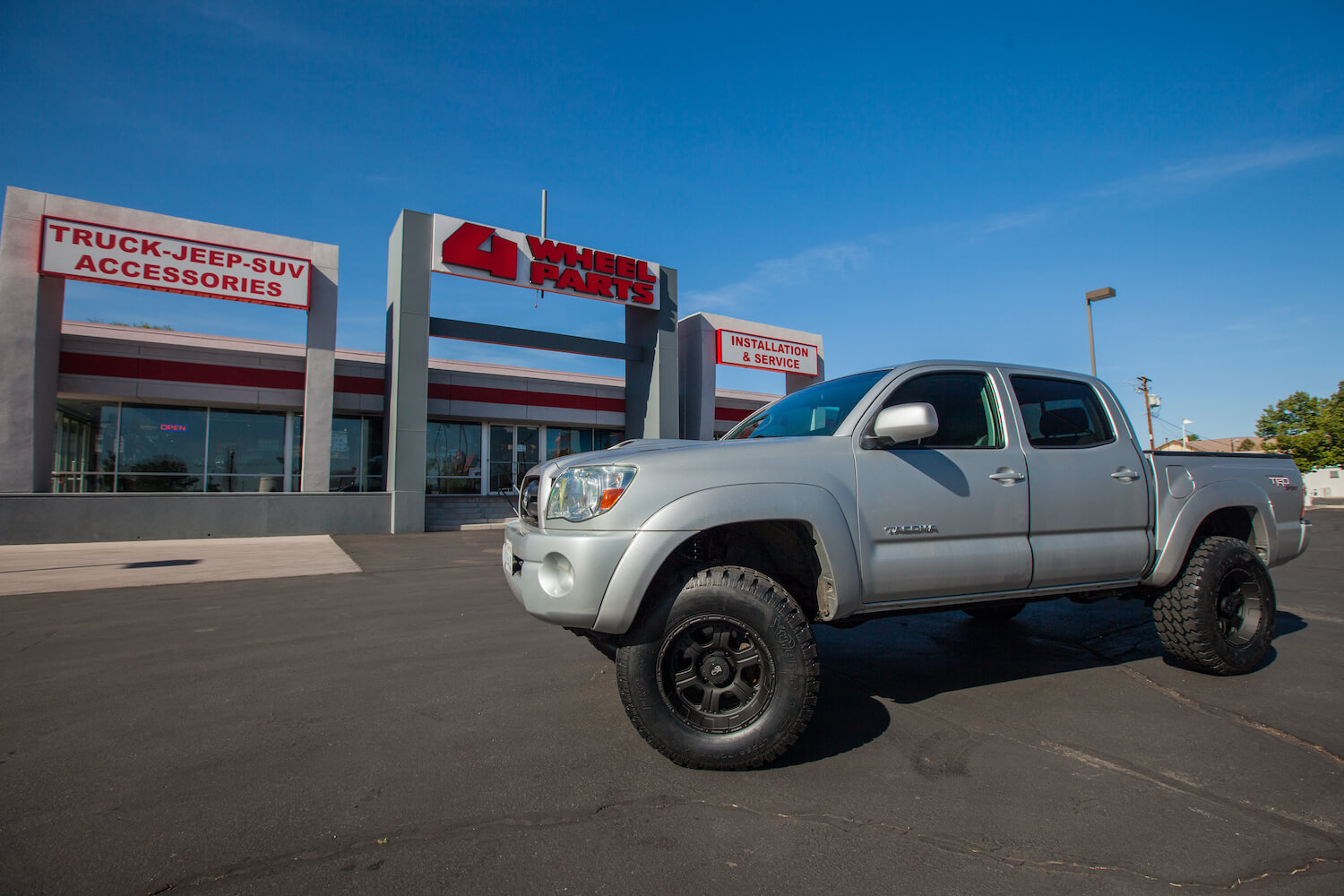
Photography by Harry Wagner
The Toyota Tacoma is one of the most popular platforms for off-road use, but let’s be honest here: they come with pretty puny tires. New 4×4 Tacoma’s come from the factory with wimpy P-Metric tires that are only 30.5-inches tall, making it easy to confuse them with a 2WD delivery truck. The good news is that 4 Wheel Parts offers a variety of lift kit options to fit larger tires on your Tacoma. There are so many different possibilities offered that picking a lift kit can be overwhelming to be quite honest. Keep reading to learn more about the various suspension choices and determine which is the best for your specific needs.
Since first introduced in 1996, the Tacoma has used independent front suspension (IFS) with coilover struts along with upper and lower control arms and leaf springs to locate the solid rear axle. The first generation (95.5-04) Tacoma uses different suspension components than the later second generation (05-15) and third generation (16-current) Tacoma. In fact, early (95.5-97) models used the shorter rear leaf springs of the earlier (90-95) pickups, but since 2005, Tacomas have used the same suspension components front and rear.
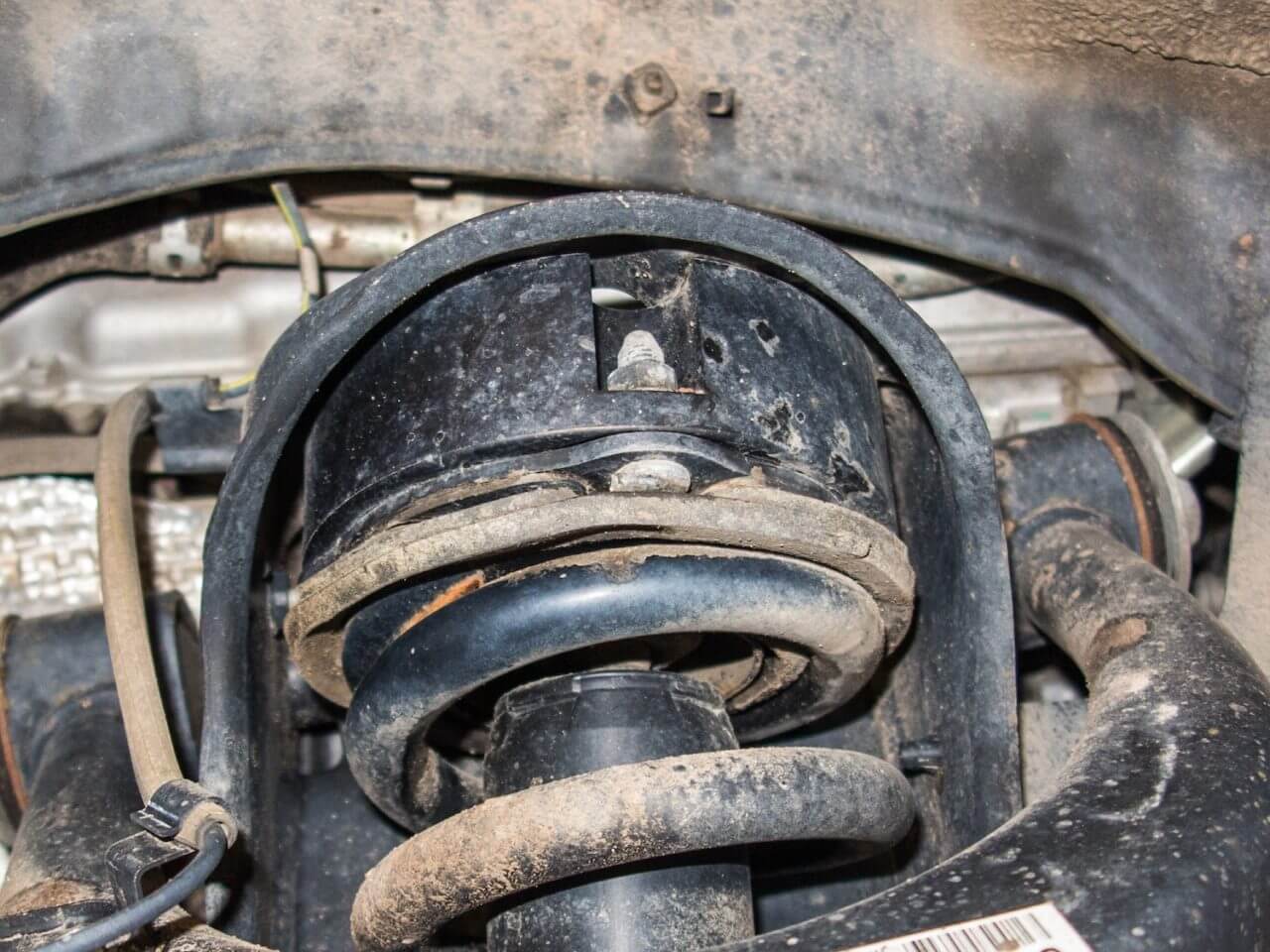
A leveling kit is an easy and inexpensive way to make room for larger tires on your Tacoma. Most leveling kits offer 2-inches of additional suspension clearance, making room for 32-inch tall tires to fit on your Tacoma and providing increased ground clearance and a more aggressive stance.
Leveling Kits
Leveling kits are the easiest and least expensive way to make room for larger tires. As the name implies, they only raise the front of the vehicle to get rid of the rake that comes from the factory when the truck is unladen. They are offered in aluminum, steel, and polyurethane from a variety of manufacturers. Since they mount on top of the factory strut assembly between the strut and the frame mount, leveling kits do not affect the factory OEM ride quality.
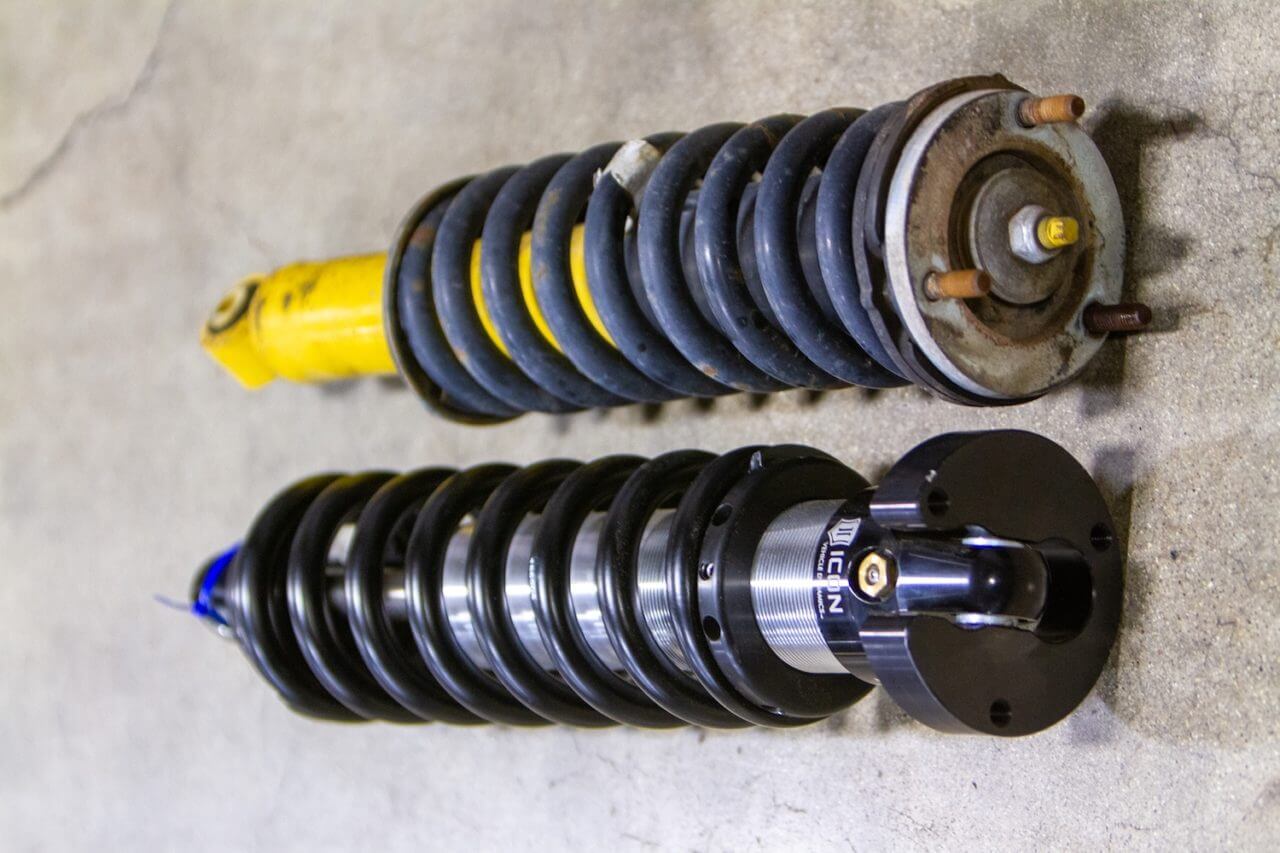
Manufacturers including Icon, Bilstein, Fox, and King all offer coilover shocks that are designed to fit the needs of most Tacoma owners right out of the box. If you want even better performance, coilover shocks are infinitely adjustable to fine tune the ride to your specific needs. You can specify the coil spring rate, the compression damping, rebound damping, and nitrogen charge to customize the ride of your Tacoma.
Coilovers
Coilover shocks are significantly more expensive than a leveling kit, but you get increased performance for your money. Coilovers come with new coil springs that can be customized with different spring rates to account for additions like a winch or steel front bumper. High end coilovers, such as those from Icon Vehicle Dynamics, are also available in a larger diameter to allow for a larger shock piston for more precise valving and increased shock oil volume to resist fading from heat. Look for shocks that are rebuildable and can be custom valved and have remote reservoirs for even greater heat dissipation.
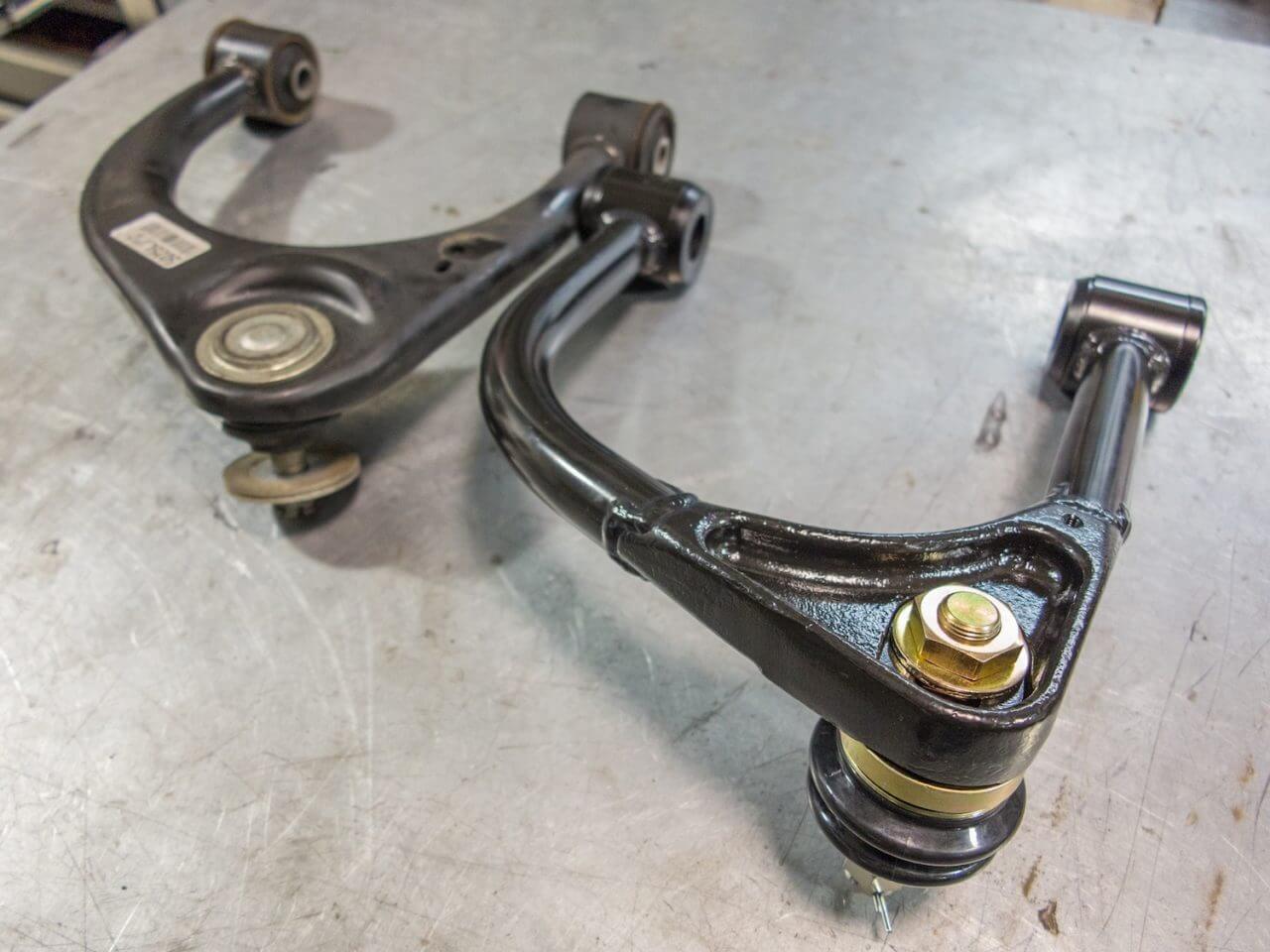
Specialty Products control arms are forged for strength and use sealed bushing for long life. The replaceable ball joint is greaseable and adjustable for camber correction, plus they offer a wider range of motion than the factory arms for an increase in wheel travel when paired with longer than stock coilover shocks.
Upper Control Arms
Aftermarket upper control arms are useful when adding coilover shocks for a variety of reasons. They are designed to increase the caster that is lost when lifting the front of the Tacoma, providing better tracking and steering feel on the road. Some, such as Specialty Products control arms, are even adjustable to aid in alignment after a lift is installed. Others, such as those from Camburg, use a spherical uniball instead of a tie rod end for increased angularity. When paired with a longer coilover, they offer more front wheel travel than a stock Tacoma.
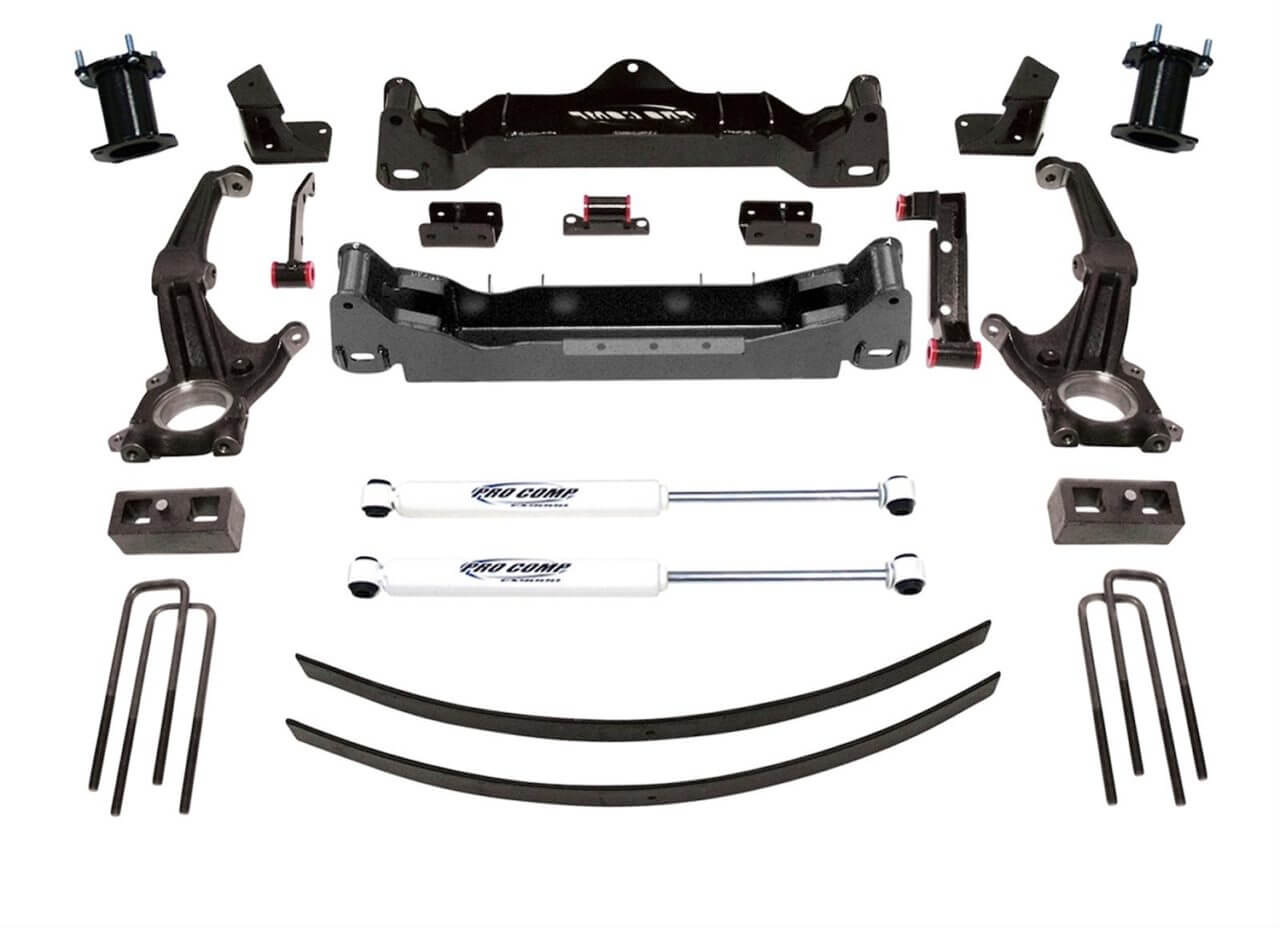
If you want to run 35-inch tall tires (or bigger) on your Tacoma, a four to six inch suspension lift will be required. These kits are available at a variety of different price points depending on the options that are added. They can be used with strut towers and the factory struts to save money, or high end coilover shocks like Pro Comp’s Pro Runner models can be added for increased performance.
Drop Brackets
If you want to lift your Tacoma more than three inches, the front differential will need to be lowered in order to allow the CV axles to function without binding. Lift kits ranging from four to eight inches in height are available from Pro Comp, Rough Country, and Fab Tech if you want the maximum altitude (and attitude) from your Tacoma. These kits come with new crossmembers to lower the front differential and lower control arms, increasing the distance to the frame and upper control arms. That distance is made up with new knuckles that are taller and stronger than stock, but accept the factory brakes, unit bearings, and axle shafts. These kits are not only more expensive due to the added components, but much more involved to install as well. Beyond four inches, look for kits that address critical components such as brake lines, sway bars, and bump stops with extensions or new, longer pieces.
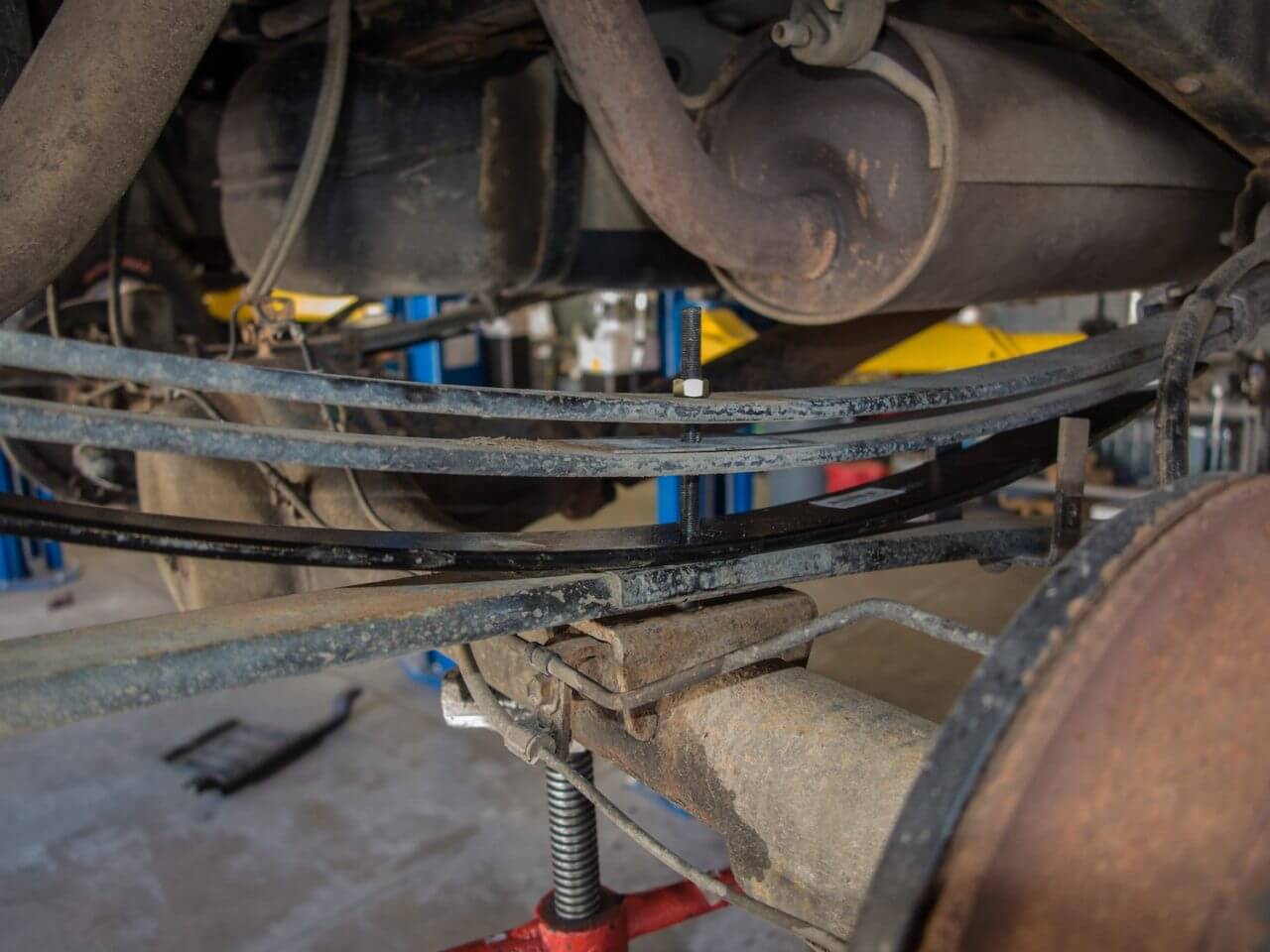
An add-a-leaf is an easy, inexpensive way to gain a little bit of lift from your factory springs. Typically, an add-a-leaf will increase the spring rate as well, which can result in a stiffer ride. Installation requires dropping the rear axle and disassembling the leaf pack to add the new spring to the pack and using a longer center pin, which is typically included with the add-a-leaf.
Rear Suspension
The rear suspension of the Tacoma is far less complex than the front suspension. Leaf springs locate the solid rear axle and carry the weight. The rear suspension can be lifted through the use of a lift block, add-a-leaf, or replacement lift spring. Lift blocks mount between the leaf spring and axle to create lift, and they require new, longer u-bolts at the same time. An add-a-leaf requires the leaf spring back to be removed and disassembled, and a leaf with more arch and higher spring rate is added to the pack. Both of these options are relatively inexpensive, and they can even be combined if a greater lift height is desired. Full replacement leaf packs, such as those offered by Old Man Emu, offer not only increased height but also an improved ride through the use of Telfon sliders and diamond cut leaf springs. And remember, if lifting the rear more than one or two inches you will want to also purchase longer shocks to match the new ride height.
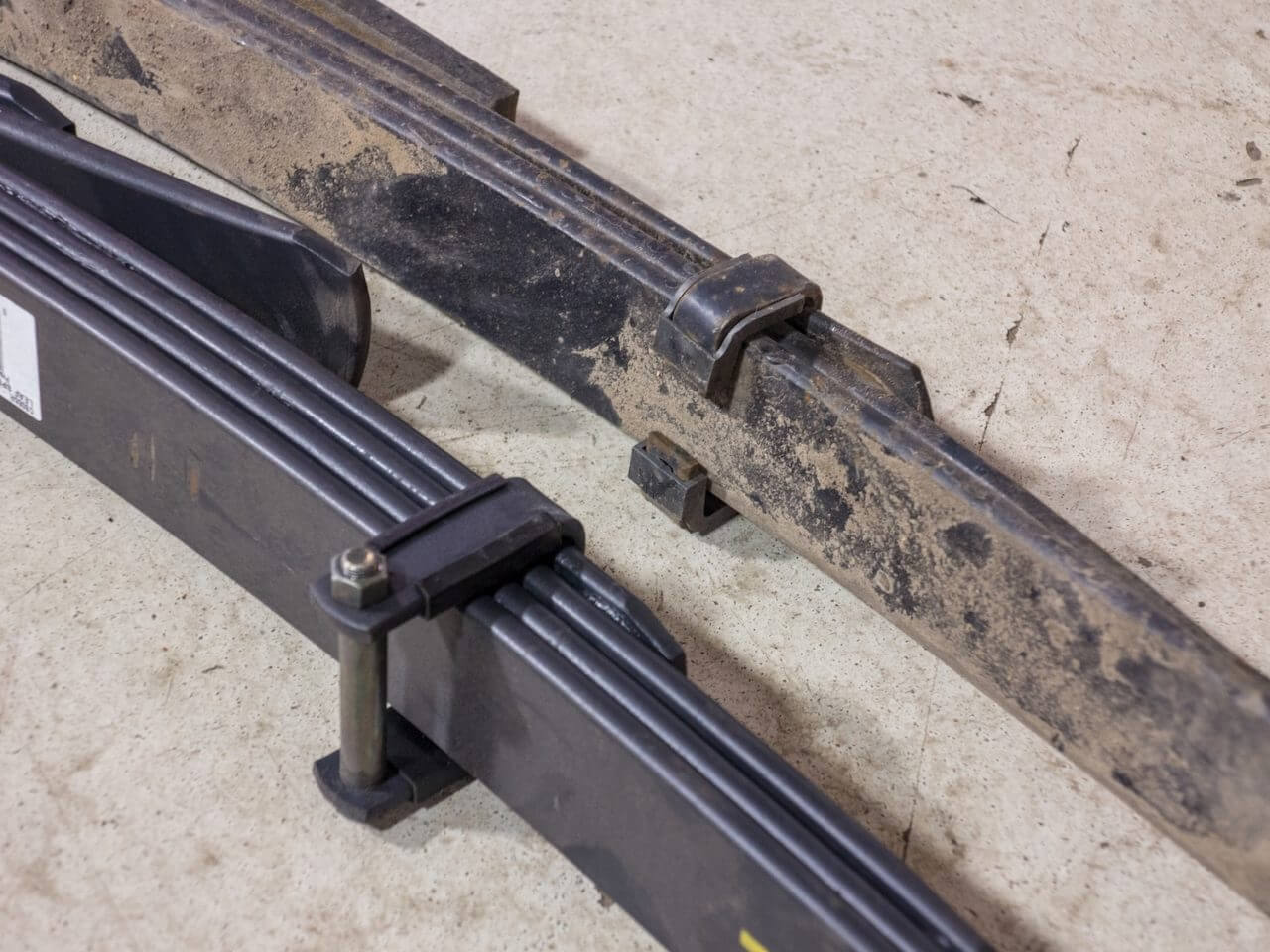
Replacement leaf springs are more expensive than using a lift block or an add-a-leaf, but they can also provide many advantages including load carrying capacity and ride quality. Old Man Emu springs are designed use military wraps on the eyes and a two-stage design for comfort. When unladen, the vehicle is largely riding on the primary stage, with the secondary stage providing additional support when a heavy load is added.
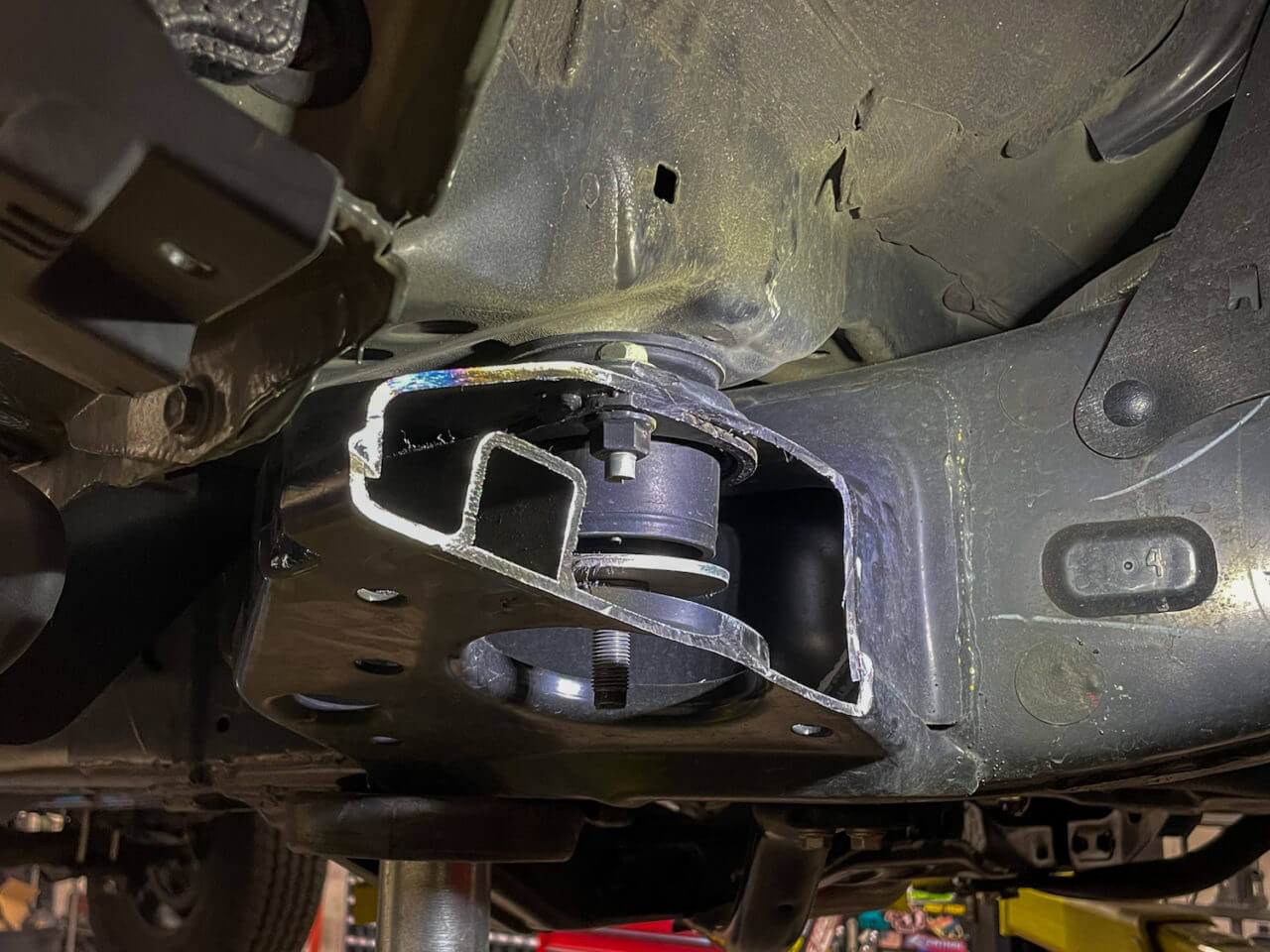
If you are running wheels with a very shallow backspacing or tires larger than 33-inches tall, you will need to modify the cab mount for proper clearance. The cutting is the easy part, but you will need to box the mount back in to maintain the strength and integrity. If you are not comfortable welding, this job is best left to the technicians at 4 Wheel Parts, who perform cab mount chops on a regular basis.
Cab Mount Chop
When running tires larger than 33-inches tall on a 2nd or 3rd Gen Tacoma, the limiting factor does not become lift height, but rather tire clearance at the body mount found under the cab at the back of the wheel well. Even with 33s, it’s common to have to trim the plastic fender liner and the pinch seam at this location to prevent tire rubbing when the suspension is compressed, and the tire is turned. Larger tires require the cab mount to actually be trimmed and boxed in to prevent rubbing. Proper backspacing is a factor here as well. 4.5 inches of backspacing is a good balance; more backspacing can cause the tire to rub the upper control arm, and less backspacing will cause the tire to rub the fender when turned.



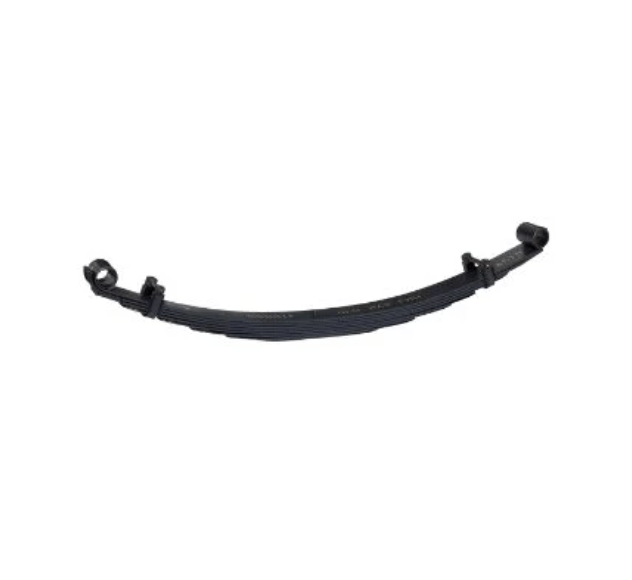
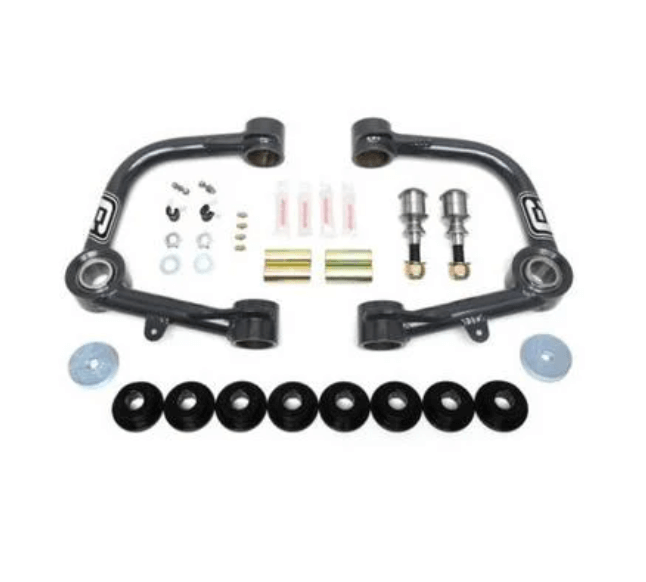
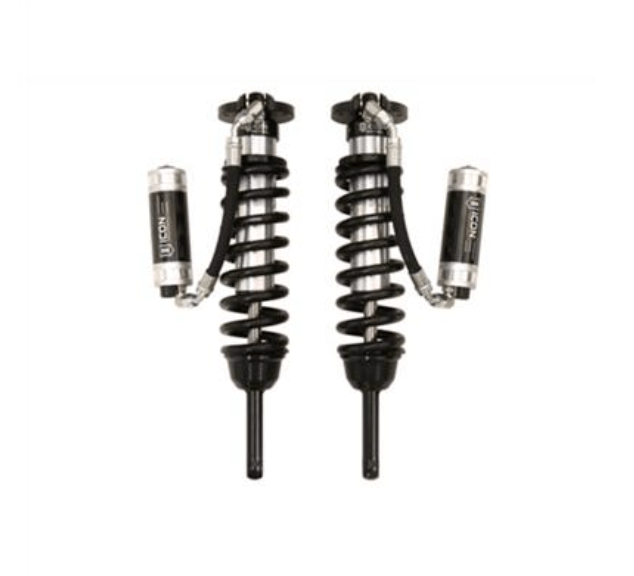
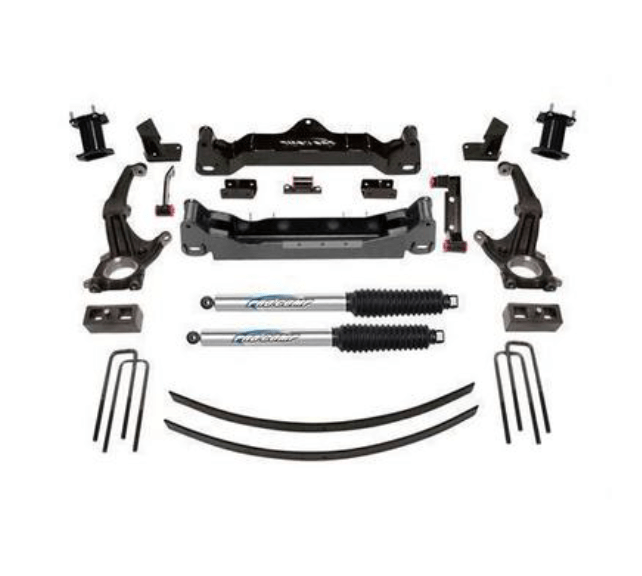
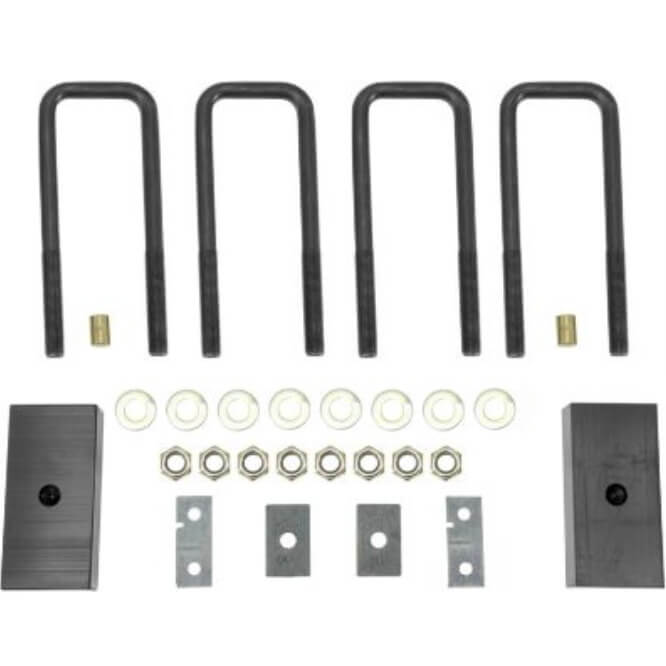
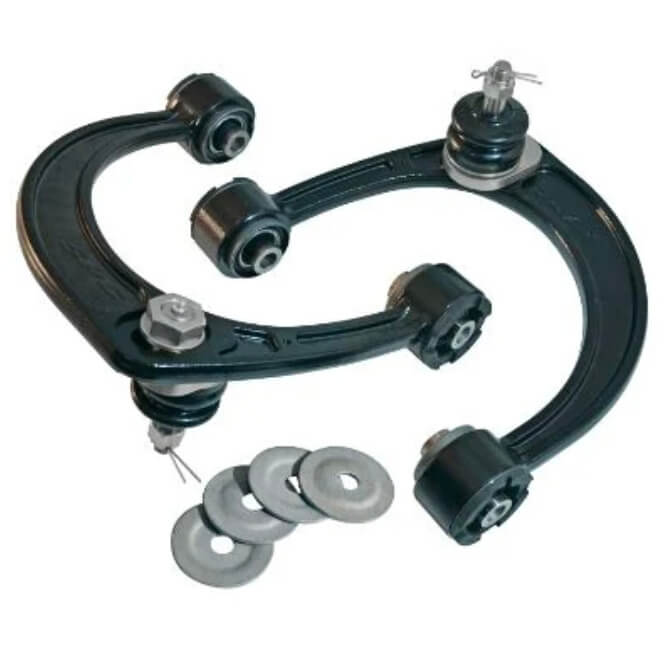
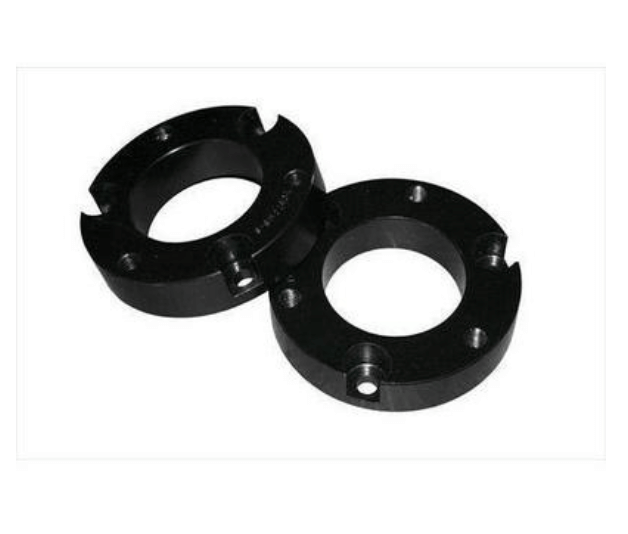
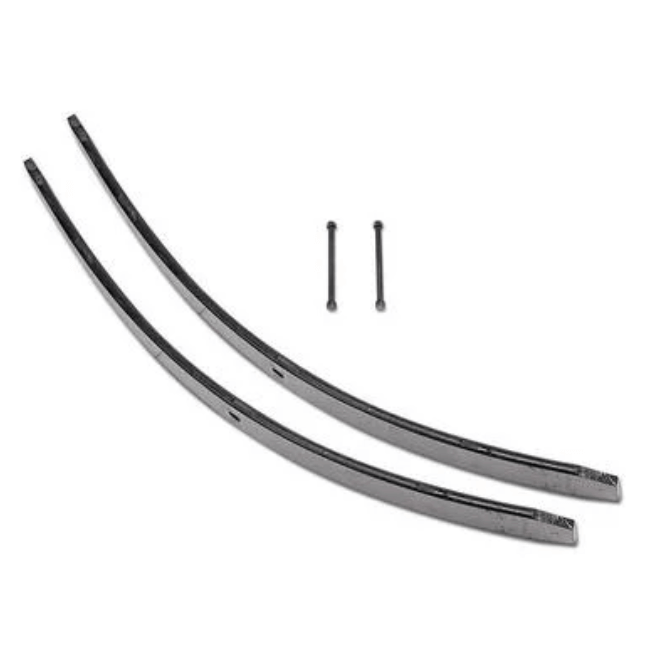
2